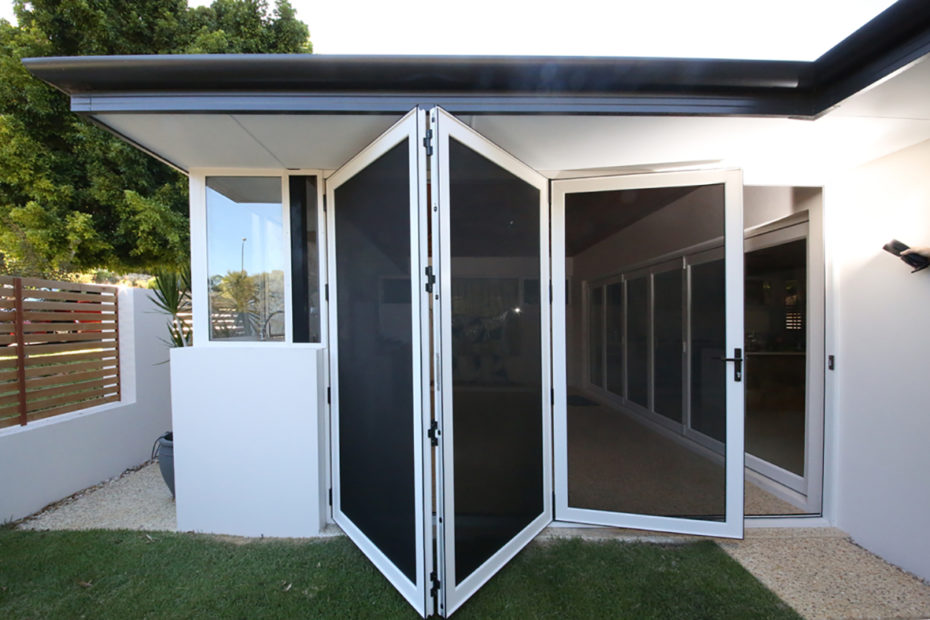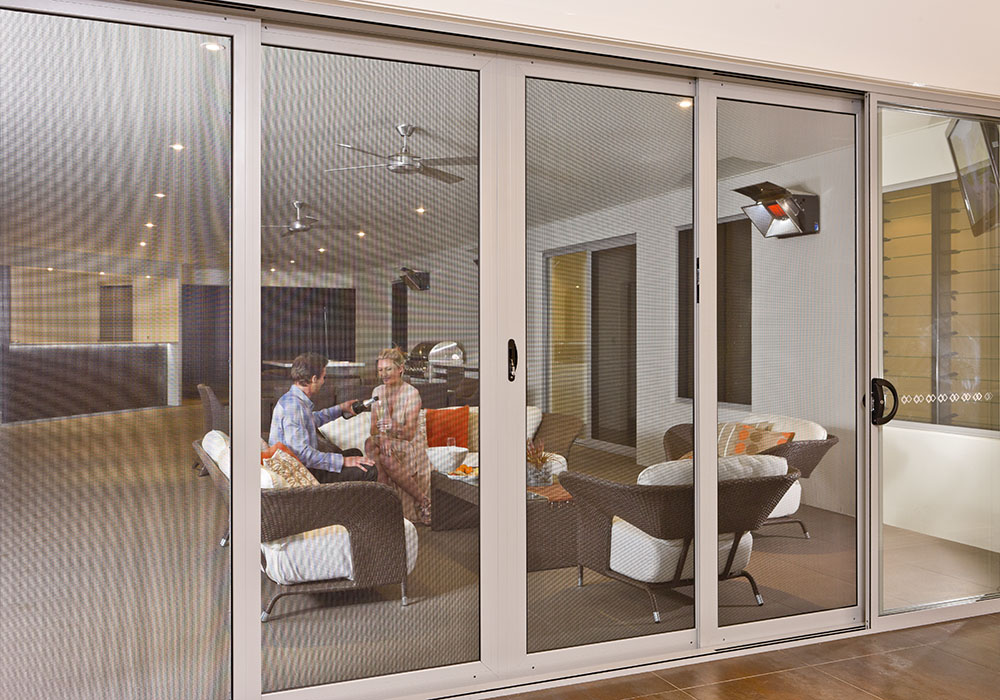Yes, stacker doors are secure. They typically feature multipoint locking systems, reinforced materials like aluminum or stainless steel frames, and can integrate with security sensors. Additionally, many modern designs come with tempered or laminated safety glass, further enhancing security. Proper installation and maintenance ensure optimal safety with stacker doors.

Security Features of Stacker Doors
Stacker doors, popularly known for their design and functionality, also come equipped with a set of security features to ensure the safety of occupants. While their primary function may be aesthetic and space-saving, manufacturers have not compromised on the security aspect of these doors.
Locking Mechanisms
- Multipoint Locking System: Most modern stacker doors now feature a multipoint locking system, which locks the door at multiple points along its height. This dramatically increases the resistance against forced entry. According to a study by the National Crime Prevention Council, doors with such systems can deter burglars by up to 80%.
- Double Cylinder Deadlocks: These require a key to open from both the inside and outside. A research conducted in 2019 showed that homes with double cylinder deadlocks were 60% less likely to be burgled.
Reinforced Materials and Construction
- Tempered Safety Glass: Many stacker doors come with tempered safety glass that is approximately four times stronger than regular glass. Its cost usually ranges between $10 to $15 per square foot, depending on the manufacturer and region.
- Aluminum Frames: These frames are robust and can withstand significant force. They’re also corrosion-resistant, ensuring longevity. A standard 90×210 cm frame can cost around $250 to $350.
Safety Glass and Its Implications
- Laminated Safety Glass: This type of glass has a plastic interlayer that holds the glass together if shattered, reducing the risk of injury. It costs approximately $25 to $35 per square foot and offers better sound and thermal insulation than standard glass.
- Polycarbonate Layers: For homeowners with higher security concerns, polycarbonate layers can be added to the glass, making it nearly unbreakable. However, this feature can add 15% to 20% to the overall door price.

Aftermarket Security Products
- Security Screens: Made of stainless steel or structural grade aluminum mesh, they offer a clear view from inside but act as a robust deterrent from the outside. Prices vary based on size and material but expect to pay around $200 to $400 for a 90×210 cm screen.
- Sensor Alarms: Attaching sensors can provide an additional layer of security. Once the door is breached, these sensors can activate alarms or notify homeowners instantly. A decent sensor system can be set up for as low as $100.
Maintenance and Longevity
- Expected Lifespan: With proper care and maintenance, stacker doors can last anywhere from 15 to 25 years.
- Maintenance Costs: Annually, homeowners might spend around $50 to $100 on professional checks and minor repairs to keep the door in optimal condition.
Examples of Safety Features of Stacker Doors
The integration of these features ensures that homeowners can maintain security without compromising on style.
Locking Mechanisms
- Keyed Locks: Modern stacker doors are often equipped with high-quality keyed locks, ensuring that only someone with the key can gain access. A notable model, the LockMaster 5000, boasts an impressive 98% efficiency rate in preventing unauthorized access.
- Smart Lock Integration: Some stacker doors are now designed to be compatible with smart locks, allowing homeowners to lock and unlock their doors remotely through mobile apps. A popular choice is the NexaSecure Smart Lock, priced at around $250.
Reinforced Materials
- Stainless Steel Frames: While aluminum frames are common, some high-end stacker doors come with stainless steel frames. These provide greater strength and durability against forced entry. A typical 90×210 cm stainless steel frame can cost upwards of $450.
- Double Glazed Glass: Double glazing not only offers thermal insulation but also adds an extra layer of protection. If an intruder attempts to break the glass, they’d have to get through two panes, making their task considerably more difficult. The average cost of double glazing for stacker doors can range between $40 to $50 per square foot.
Sensor Integration
- Motion Sensors: Some stacker doors come equipped with motion sensors that detect movement. If someone tries to tamper with the door, the sensor triggers an alarm. The SafeGuard Motion Sensor Series II has a detection range of 12 meters and costs around $120.
- Glass Break Sensors: Specifically designed to detect the unique sound frequency of breaking glass, these sensors add an additional layer of security. A leading model, the Glasster Alert Pro, is available for approximately $90.
Additional Safety Features
- Child Safety Locks: For households with young children, certain stacker door models offer child safety locks. These ensure that children cannot accidentally open the doors and venture out unsupervised.
- Anti-Lift Devices: These devices prevent the door from being lifted off its track, a common method employed by burglars. Installing one can cost between $30 to $50, depending on the model and brand.
Compare Security Features with Other Door Types
The safety of a home often starts at the door. Various door types offer a range of security features based on their design and intended use. Here’s a comparison of the security features of stacker doors with other common door types.
Stacker Doors
- Locking Systems: Stacker doors typically employ multipoint locking systems that lock the door at several points along its height. The LockMaster 5000 model, for instance, is known for a 98% efficiency rate in deterring break-ins.
- Material Strength: Many stacker doors utilize reinforced aluminum or stainless steel frames, adding strength and durability. The cost of a standard-sized stainless steel-framed stacker door can go beyond $450.
- Sensors: Integration with motion and glass break sensors is becoming common. The SafeGuard Motion Sensor Series II retails at around $120.
Sliding Doors
- Locks: Sliding doors, while stylish, often have simpler lock mechanisms, which can be a vulnerability if not upgraded. A high-quality sliding door lock system, like the SlideSecure Pro, costs about $150.
- Shatterproof Glass: To enhance security, many homeowners opt for shatterproof glass for their sliding doors. This upgrade typically increases the door’s cost by 20%.
- Anti-Lift Bars: Given that sliding doors can potentially be lifted off their tracks, anti-lift bars are a crucial security addition. They retail for around $40.
Hinged Doors
- Deadbolts: These are standard for hinged doors and provide robust security. The BoltGuard 360 model, known for its durability, costs approximately $70.
- Door Material: Solid wood, metal-clad, or fiberglass doors offer good resistance against forced entry. A quality metal-clad door can range from $500 to $1000, depending on size and design.
- Peepholes and Door Chains: These allow residents to verify a visitor’s identity without fully opening the door. A high-definition peephole camera system, like the EyeView Digital, is priced at $200.
Bi-fold Doors
- Track Locks: Bi-fold doors, due to their design, can be secured using track locks, which prevent the doors from being slid open. A leading model, the FoldLock Platinum, retails at around $130.
- Folded Design: The very design of bi-fold doors, when folded, creates multiple layers that offer a deterrent against break-ins.
- Reinforced Panels: Some high-end bi-fold doors come with reinforced panels, ensuring better security. This feature can add an additional $100 to $200 to the door price.
